
Anupama Kundoo photographed by Joseph Kadow for PIN–UP.
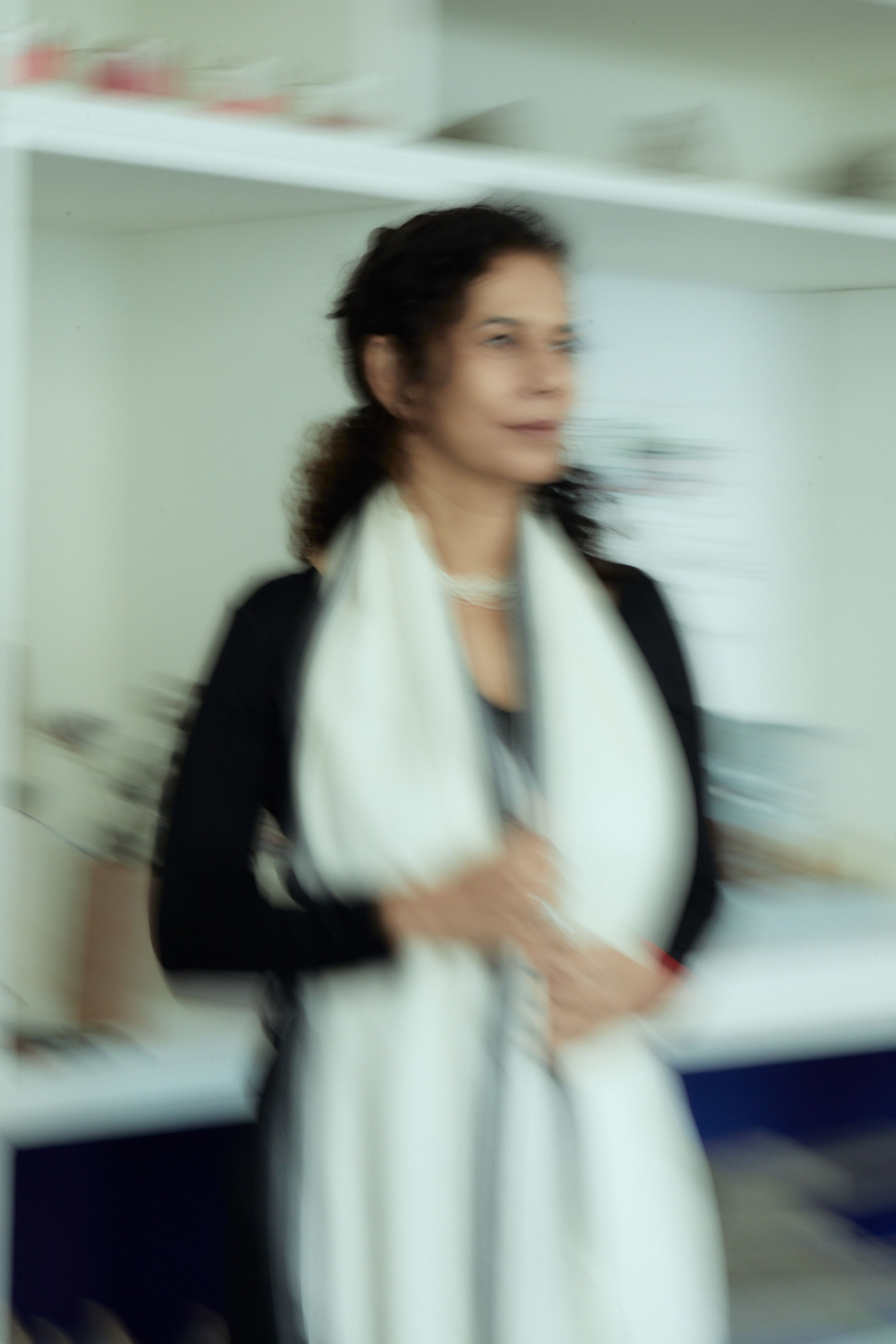
Anupama Kundoo photographed by Joseph Kadow for PIN–UP.
For Indian-born Anupama Kundoo, architecture should be about the locally-sourced and the custom-made rather than universal “standardizations that don’t make sense.” In 1990, after graduating from the University of Mumbai, she headed to Auroville, the Roger Anger-designed urban experiment in Puducherry, where she honed her radical (and radically resourceful) approach to design. She built a house for herself there — the Hut in Petite Ferme, with its mud-brick and pakamaram-stem walls and palm-thatched roof — and lived in it, too, taking advantage of the opportunity for self-contemplation, all the while managing a team of some two dozen architects for the countless projects she has realized in Auroville since. These include houses, the local youth hostel, and even the town hall, designed in collaboration with the late Anger. Rooted in site-specificity, introspection, and local solutions, Kundoo’s practice has nonetheless been consummately global: since leaving Auroville, in 2002, she has held academic appointments at Parsons in New York, the University of Queensland in Brisbane, and the Universidad Camilo José Cela in Madrid, and in 2008 completed a PhD — about Puducherry-based ceramicist Ray Meeker’s experiments with baked-in-situ mud houses — at the Technische Universität in Berlin. It’s also the city she now calls home. Though the architect has covered a lot of ground, as it were, it is time, more than space, that has come to occupy her thinking over the years, which gave us 2020’s Taking Time, a retrospective at Denmark’s Louisiana Museum of Art showcasing 30 years of her extraordinary architecture. When I let Kundoo know, apologetically, that I was running 15 minutes late to our studio visit, she took the time to pop out and get us both something from a nearby café — the office coffee machine wasn’t working that day, and she likes to use unanticipated free moments “to do something nice,” she explained when I arrived. “Nice” is wildly insufficient to describe anything else Kundoo does: her work challenges received ideas while making new ones accessible; it is sovereign, wholly independent of any of “the latest discourse,” but has organically forecast it at every turn. We spoke over coffee in her studio in Pankow.
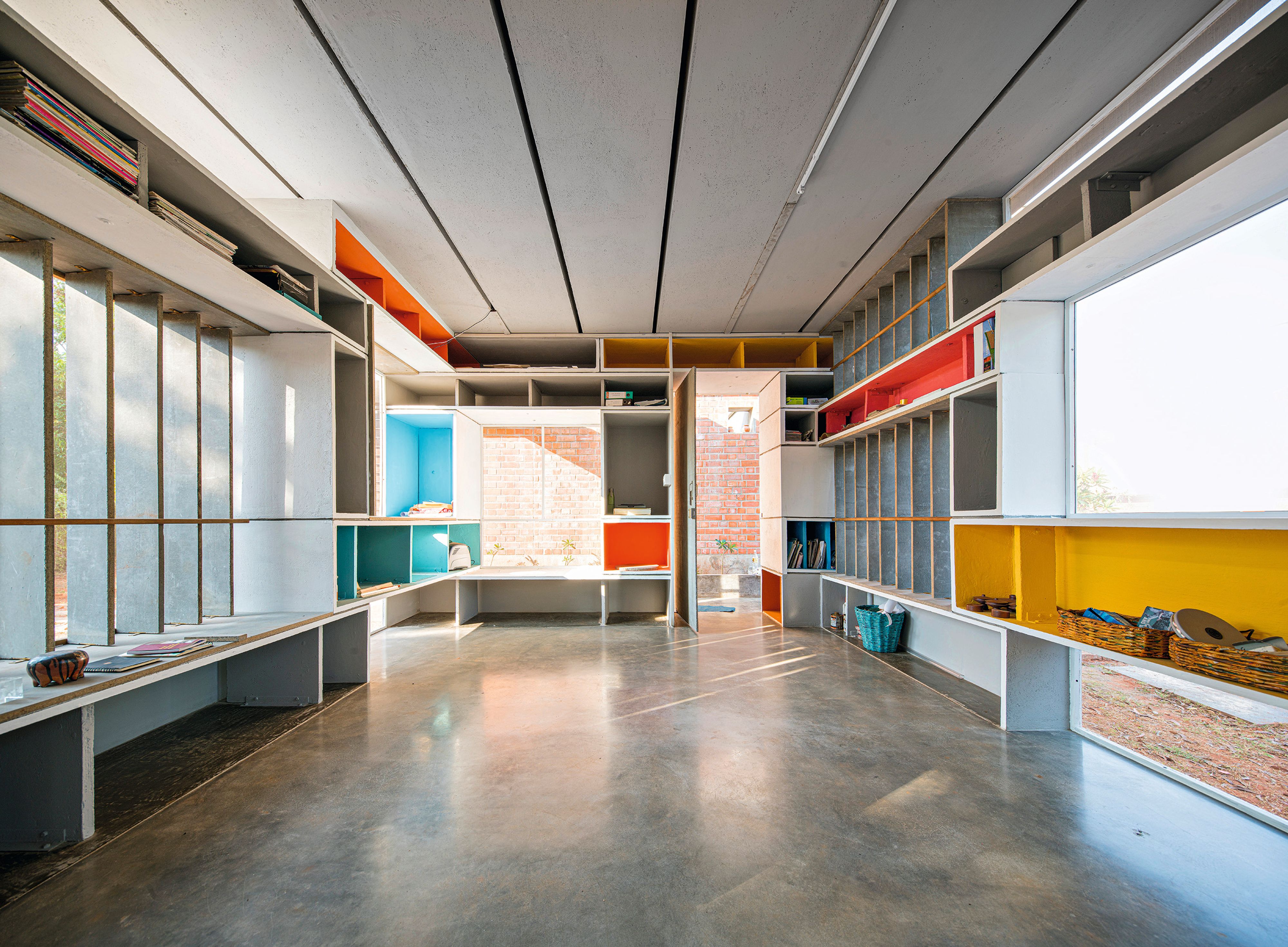
Full Fill Homes (2015) is Kundoo’s response to rising levels of houselessness and concerns about affordability and the environment. The structures are built using prefabricated ferrocement modules, which can easily be assembled on-site. Ferrocement is also used to produce a range of simple window, door, and roof elements, and other necessary building components. They provide “voids” inside the blocks, which serve as storage space and nooks for seating and sleeping, requiring little to no additional furniture. Kundoo envisions the structures as immediate shelters in disaster zones, student housing, housing on farmhouse plots in remote areas, or as a simple guest house. Photography © Javier Callejas

Anupama Kundoo photographed by Joseph Kadow for PIN–UP.

Anupama Kundoo photographed by Joseph Kadow for PIN–UP.
Victoria Camblin: What is your personal philosophy of time, outside of these coffee cups?
Anupama Kundoo: Architects talk a lot about space. But space and time are equally important constructs — not just for architects, but for everybody. Time is the under-discussed aspect. “Taking time” is not about slowness or delaying things. It’s more about the relationship to time that humans have cultivated in the post-industrial world. Time is something that we are now working against, instead of making it our friend. “Time is money,” and humans must outsource everything to the machines, because human labor is too costly. Every hour someone “takes” makes production less affordable. Yet time is also the biggest equalizer. Everyone — rich or poor, young or old — has 24 hours in the day. We may feel imprisoned by real or imaginary constraints, but time may be the one area in which we actually have some agency. Are we spending it properly? Time is a very poorly managed resource. All these terms we have unconsciously coined have become ways to undervalue ourselves and our role in what we do, what we build, what we create. If everything human — the mind, the hand, the muscle, the feeling — is withdrawn from the equation, that’s also very costly. Plus, it creates a world we don’t like, and we become nostalgic about how it used to be, instead of taking responsibility. One thing I’m sure of is that evolution is occurring. That’s an opportunity for us to take change into our own hands, instead of being victims of our circumstances. To the idea of “making time,” I say, “No, let’s take time.” Proactively. Let’s go out and claim it.
Reclaim it?
Beautiful. Reclaim the time that was always yours. You do that by being aware of how you use your time and the implications of using it this or that way. We talk about all the wonderful things we learned from our grandparents, but are we aware that with the passage of time each act we do today will determine what kind of ancestors we will become for generations down the line? I’m not speaking about sustainability. If people don’t act in the moment-to-moment flow of life, and instead go about business as usual, you get apathy. Taking time, for me, is an empowering act.
So is time a tool or an essential material we’ve been trying to outsmart, instead of using it in effective construction?
Yes, especially in developed countries, shaped by over-standardization — by the Starbucksification of everything. Difference is healthy for the collective. It’s costly to eliminate, but everyone loses when we sacrifice diversity for convenience. I grew up in a world where every dress we wore was made to measure — not because it was fancy, but because that’s how it was. You went to a shop, and you had to start from scratch: you chose the fabric; you told them if you wanted two pockets. You had to think about what you wanted, and you were ultimately responsible for how it looked. If you didn’t fit a certain size — “S, M, L, XL” — you never thought something was wrong with your body. The West is so over-standardized that everyone’s going around feeling bad about themselves, because most people don’t fit the norms. But what in nature ever fits into a box? Spiders and birds don’t have permits and licenses, but they know how to build the homes they need. Do we really think we can enforce man-made laws as permanent as natural ones? We make rules and regulations without an understanding of universals like gravity and the elements. No plot of land is identical. Every climate is different. The materials at a given site will differ depending on specific conditions. In this way, all architecture is custom-made. We don’t want architects tying themselves up with standardizations that don’t make sense.
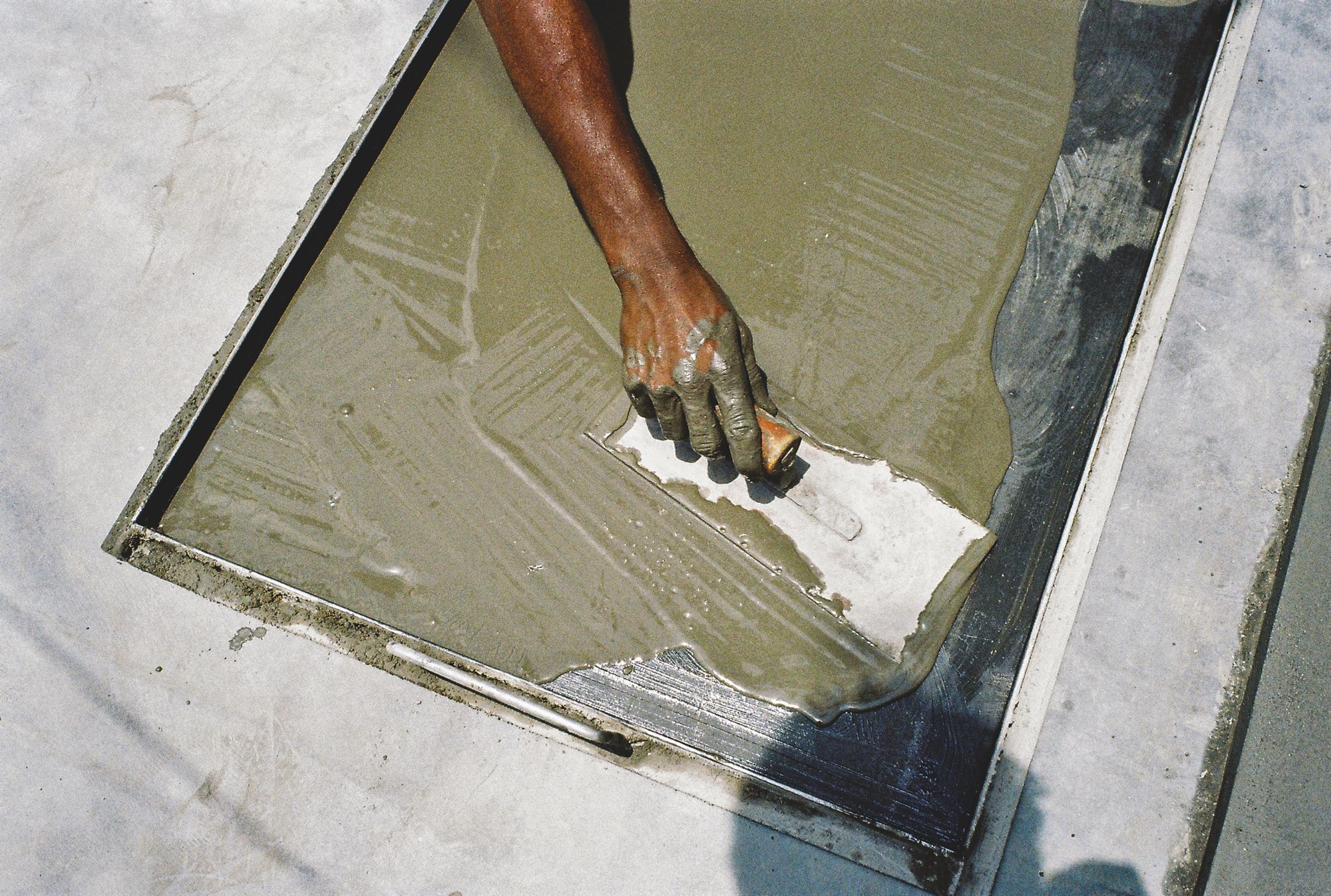
Ferrocement — a thin-wall reinforced concrete build using chicken mesh, welded mesh, and small-diameter steel reinforcement — was first unveiled in 1940 by Italian architect Pier Luigi Nervi. Kundoo has adapted the low-cost, low-tech, and very lightweight material to the context of Southern India, significantly reducing the quantities of high-embodied-energy materials used in construction. Rather than producing them in factories, ferrocement blocks can be made in the backyards of masons’ homes, providing them with additional income, thereby reducing costs while helping the local economy. Photography © Andreas Deffner

Homes for Homeless Children (2008–10) is a project Kundoo undertook for the Puducherry-based NGO Volontariat. The low-cost, low-impact housing solution can accommodate 15 children and five foster parents. It was constructed using a method pioneered by Ray Meeker of Golden Bridge Pottery, which involves building with mud bricks and mortar and then firing the structure from within as if it were a kiln. The construction also incorporates other discarded materials such as bicycle wheel frames (used as formwork for windows and window grills), glass bottles (as structural units for masonry), and glass chai cups (used to finish the openings at the top of the domes). Photography © Andres Herzog
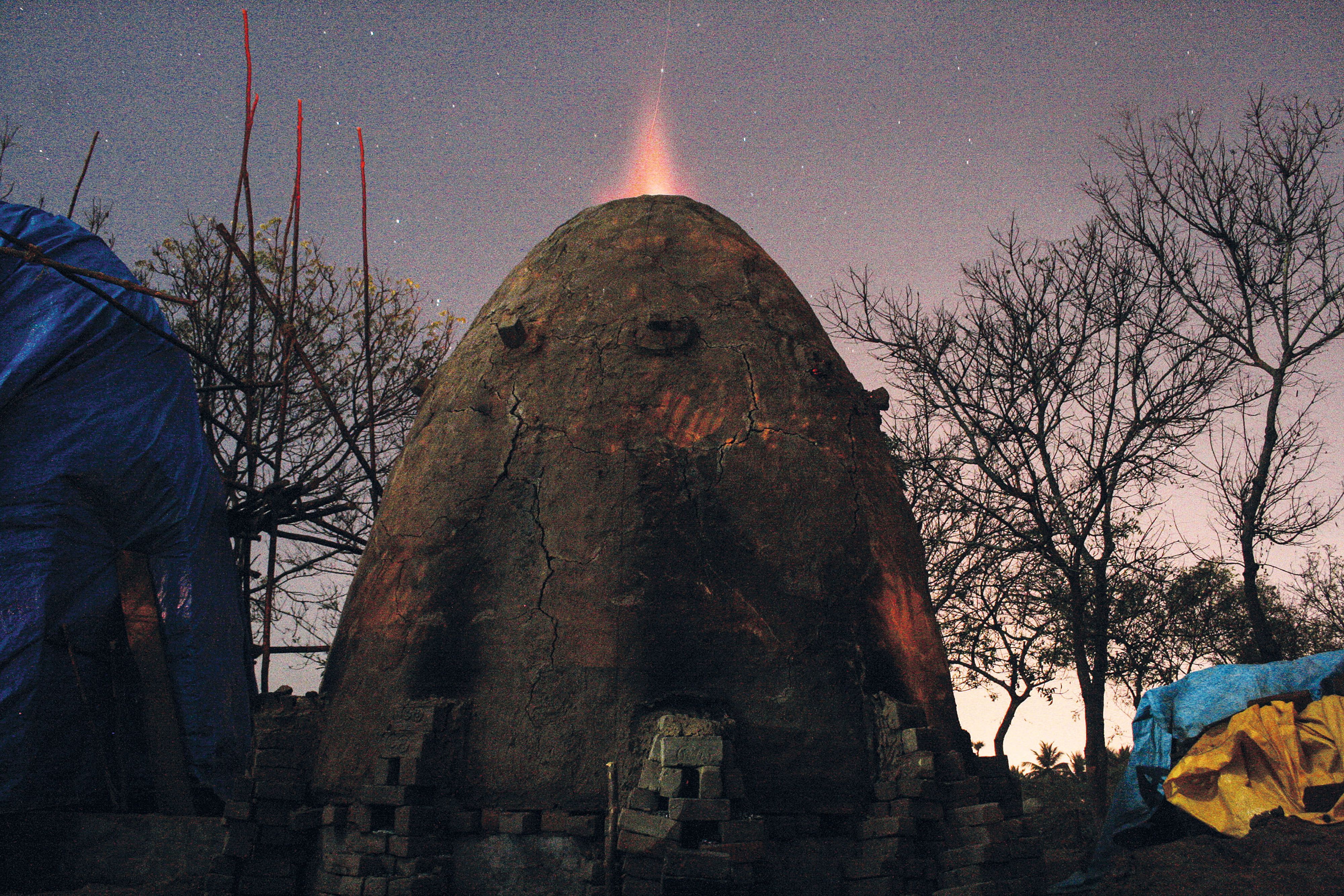
Anupama Kundoo's Homes for Homeless Children. Photography © Javier Callejas
There are cultural attitudes about how things are supposed to be used. I always rant about how New Urbanists hate John Portman’s mixed-use complexes for being anti-social because they have skyways and supposedly discourage the use of communal space, whereas outside America those exact same buildings are buzzing with life.
This is the thing: life is something that just has to be — not something pre-planned. It may sound silly, but I honestly think of life, my own included, as a river. You come from a source; you are tiny at the beginning and then you start expanding. You’re not alone in the river. Other things are entering all the time. Like the water, we cannot afford to be stagnant, it’s not healthy. Waters are always adjusting to a certain terrain, but whatever the landscape, their nature is to flow. We know we will end up in the sea. In the end, I am not a rebellious person, since I have no intention of challenging universal laws by trying to go upstream. I prefer to go downstream. I surrender with respectful fascination and wonder about the universe. But those manmade laws? I question all of them. What’s funny is that if everyone is going upstream, and you go downstream, they call it “alternative.”
I feel like basically anything you say now is going to fit the theme of this issue, “Under Construction.”
We are the ones who are under construction through what we make. What we make makes us. If I draw a lot, my hand gets better. My every action is cultivating me in the end. We are constructing ourselves through what we construct. And, as an architect, you’re constructing yourself individually, but you’re also building collectively: building knowledge, building itself, building community.
I’m writing a lot on paper lately, so I developed this little callus on one finger from the pen. There’s a little dent in the body from doing it.
See? When I was in my mid-20s I lived in this hut that I built myself. It took many years, and there was a lot of solitude. I thought a lot about how making things shapes us physically. But what about how it shapes our inner being or our mind and our awareness? How does it make us more conscious or more mindless? There can be mindless repetition in our work. The same work as creative expression could be done as a sport. I want to work from a place of knowing that it’s all an act of becoming and constructing.
The hut you’re referring to was in Auroville in southeast India, right? You also built a second home there that was famously reconstructed one-to-one at the Arsenale for the 2012 Venice Biennale.
Yes, the Wall House [completed in 2000 and built using thin “achakal” mud bricks and terracotta-tile vaults].
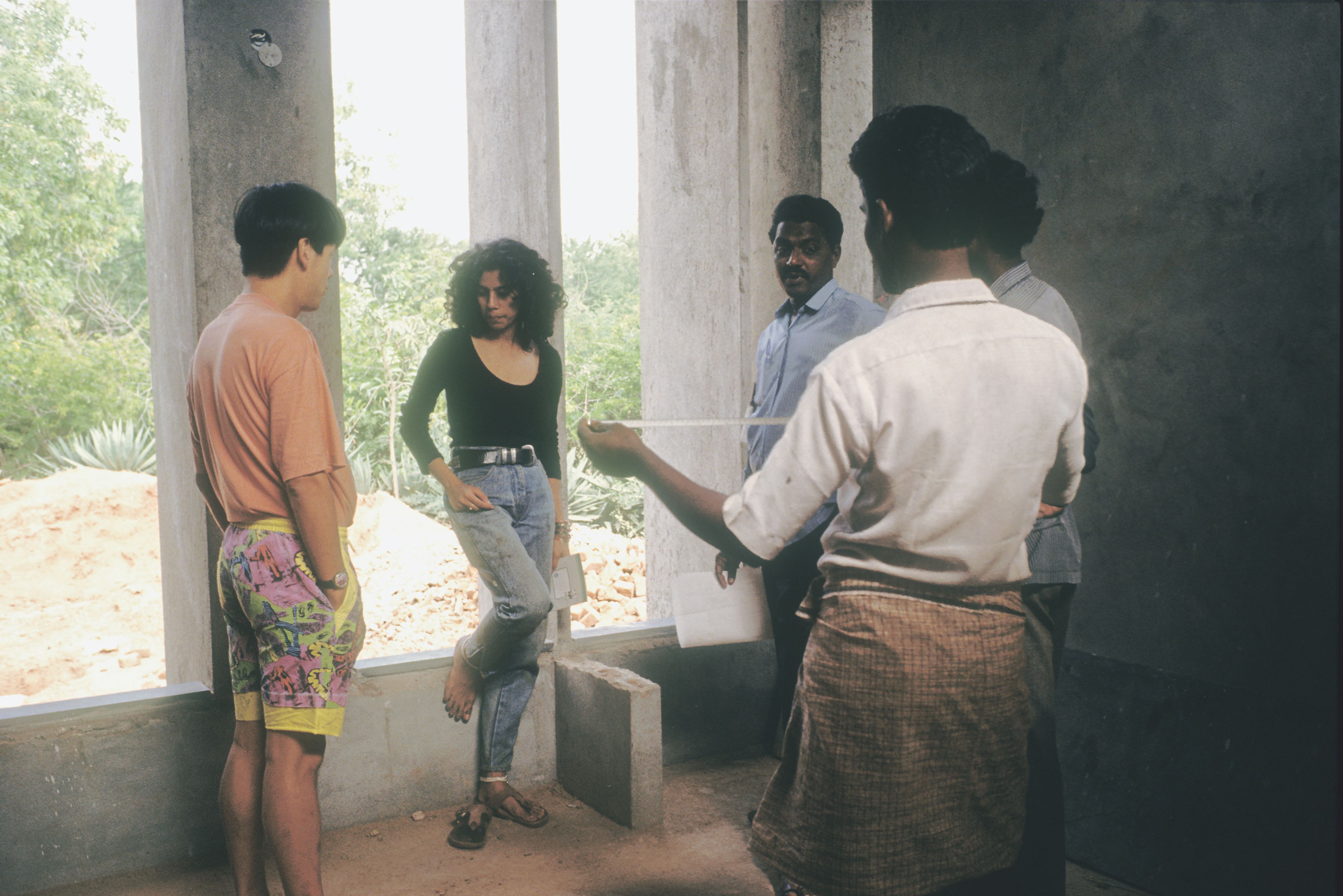
Kundoo pictured at the site of Residence Pierre Tran in Auroville (1991–92). Photography © Andreas Deffner
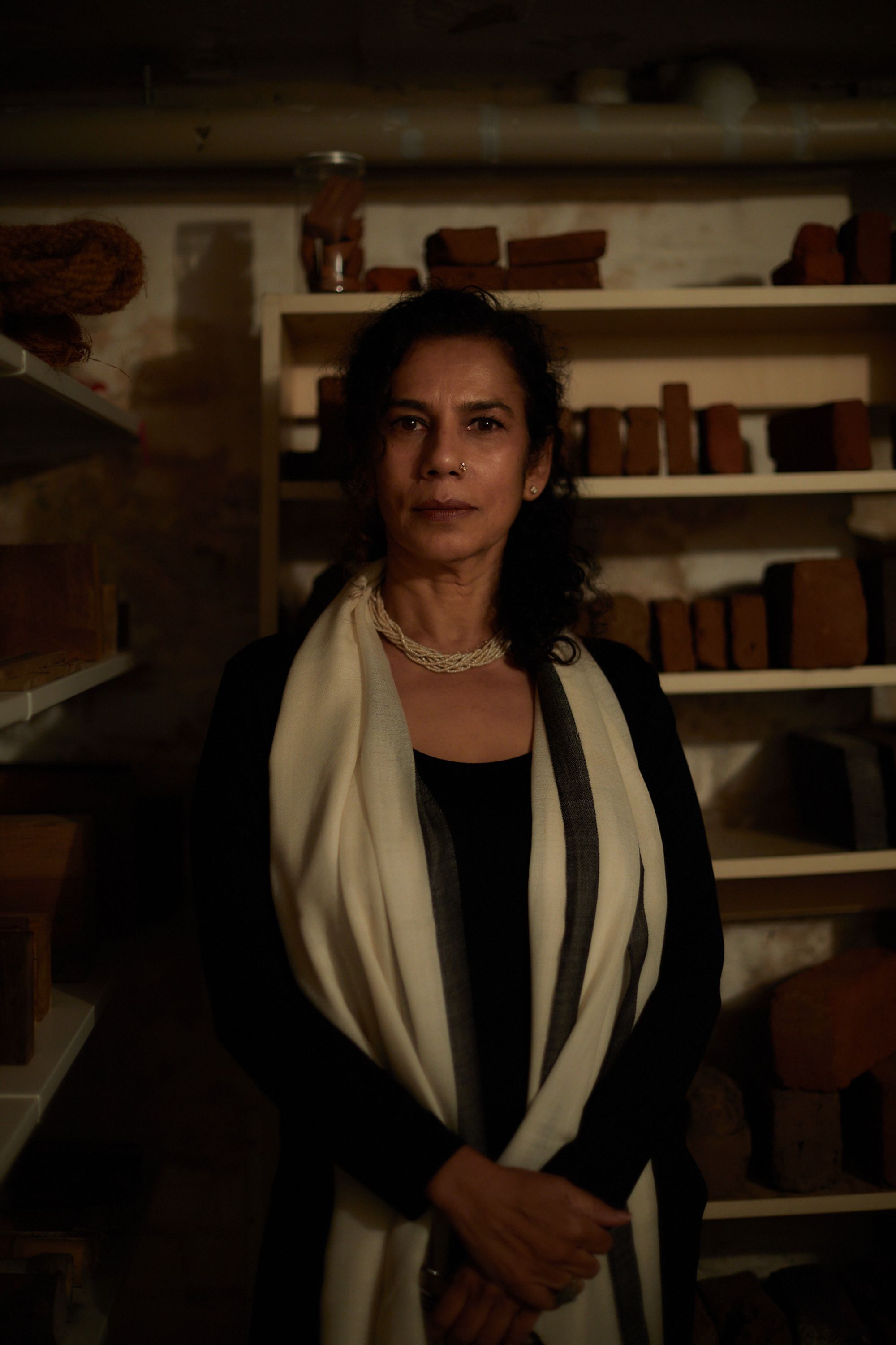
Anupama Kundoo photographed by Joseph Kadow for PIN–UP.

Kundoo pictured at the site of Residence Pierre Tran in Auroville (1991–92). The private home was her first experiment with the terracotta roofing system she would later use for the Wall House. The vaulted ceilings are made from hollow terracotta tubes assembled into catenary vaults, providing insulation without structural steel or concrete. Photography © Andreas Deffner
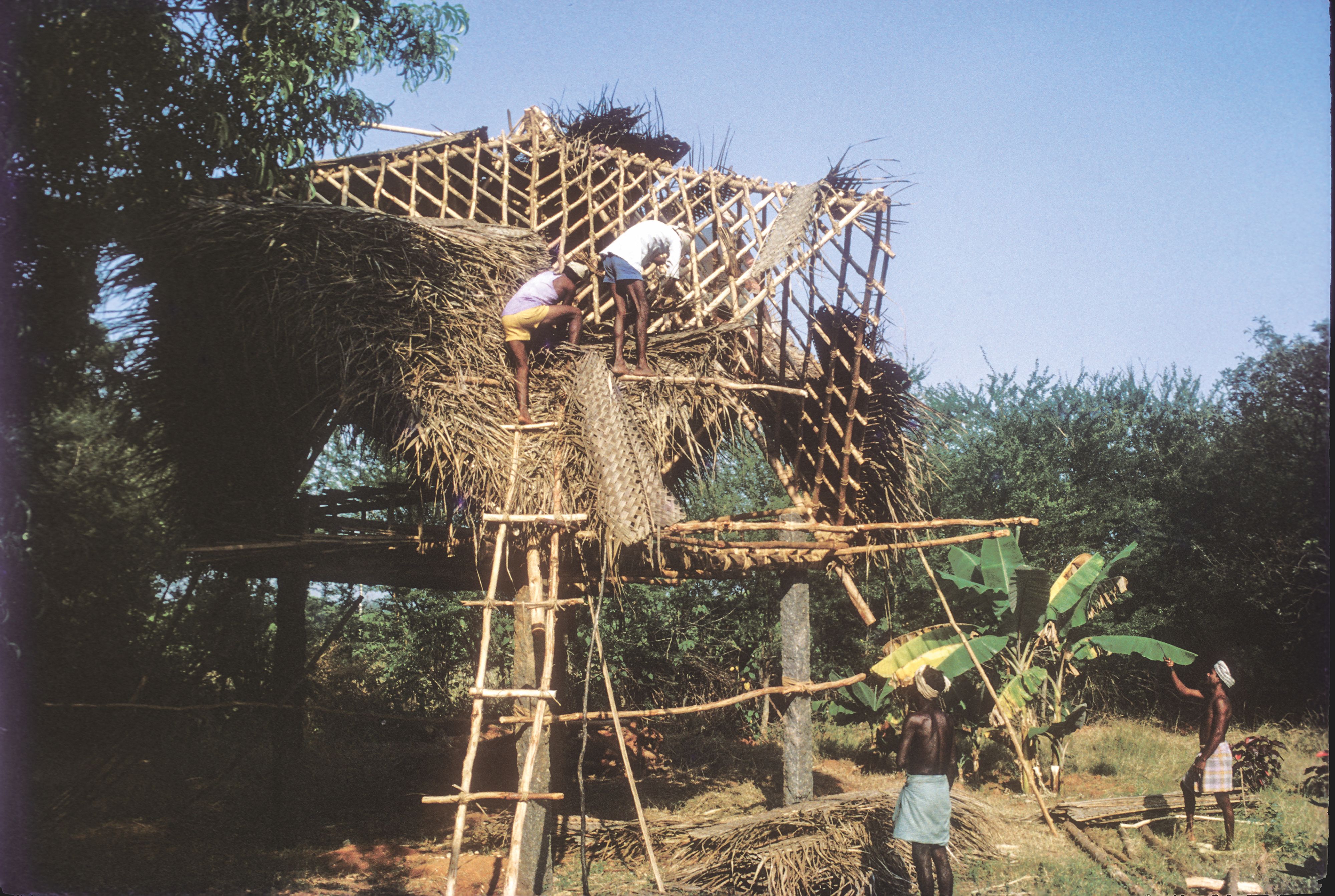
The first home Kundoo built for herself was The Hut in Petite Ferme in Auroville, India in 1991. The construction materials were all local and included granite pillars, pakamaram palm trees that were split and used for floor finish by tying those elements with coconut rope to casuarina round wood joists. The structure relied on solar power for its electrification and water-heating demands. Photography © Andreas Deffner
I just remembered I had a dream about Venice last night. I was caught in a huge flood and was swept out from the Grand Canal toward the sea. I managed to climb back out, but all my clothes has been taken away by the current.
Into the water, excellent! Did it feel liberating, or did it feel bad?
I entered a hotel where I had a meeting and there was a boutique. The people working there ave me a warm new outfit for free, and didn’t make me feel ashamed at all.
So you were liberated, freed from something stagnant. Venice has very stagnant waters, as we all know. The big sea sucked you out of the smelly canal. Maybe you are ready for something big out there and everyone is giving you what you need for the next chapter? I’m not Freud, but I do believe there is an unconscious knowledge that surfaces when you sleep. When you’re awake, you’re not listening to your real voice. When you’re dreaming, your inner voice speaks to you in a masked way because if it tried to tell you something straightforwardly, you would become even more deaf to it. Dreams very carefully give you a way to save face in that respect. You can take their superficial meaning or you can really work with them. I choose to. It doesn’t have to be rational. Things can be patchy, but you just listen. It’s the same with any narrative: it doesn’t need to be “true” for a certain interpretation to resonate. I take as much inspiration from the imagination as I take from the land, from materials — from anything tangible.
I’d like to go back to the S/M/L/XL problem. When we say a garment is “one size fits all,” what we are describing is something that fits no one well. I’ve been thinking about this lately with respect to living in Germany. I always assumed that fear of the bureaucratic and rule-abiding culture here was something only non-Germans experienced, but recently, at the tax office, an employee said, “I’m sorry, we also find this new form terrifying.” The applied standards don’t work for any of us.
One of my favorite books is [George Orwell’s] Animal Farm. It illustrates the oppressive nature of what can go on inside the collective. I often feel pigeonholed by whatever labels the West is interested in — women in architecture, sustainability, the blah blah blah of it all. Lately I’ve been invited to speak at a lot of conferences about “green” architecture. European countries have committed to a lot of environmental targets, and they want you to look at their building habits. When you present new ideas, people are impressed; they appreciate your questioning. But then immediately comes the justification about why whatever you’re suggesting isn’t possible. They say, “This is all well and good in India, but here, our hands are tied.” It’s not just Germany — we all indoctrinate the next generation to curb them from doing things we couldn’t get our act together to do. And being an architect here in Germany holds you to very specific rules. That’s why I have the word “atelier” on my studio window: to widen the scope, to show that I haven’t given up on thinking, that research is going on, and we’re not just composing ready-made things and competing for jobs that facilitate real-estate development. I don’t subscribe to the architect’s role in a developer-driven world. I also prefer collaboration to competition. It’s my nature to help whichever community I’m a part of. That also means intergenerational collaboration. Architecture outlives humans. Look at the fantastic things the ancestors produced: do we not relate to that work and find it timeless in its beauty, or in its construction techniques, or use of whatever material was lying around? There is nothing “moral” or “ecological” about these considerations. Those words came into the world later. We can take 100 years to build something. Someone turns 80 and dies and, just because that lifetime was too short, we restart from scratch. When the chief architect of Auroville, Roger Anger [1923–2008], who I had worked with, passed away, I continued to work with him, to the best of my ability. I was a part of that place. But I was also in Mumbai, New York, Australia, Berlin — the river took me here and there. There is always an entanglement with those places. One of my grandparents was from Bangladesh, which used to be part of India. At partition, the country was split, like Berlin was split. That informed my relationship with Berlin. I liked that analogy, because it showed me a scenario of a manmade construct and invited me to think about overcoming division. I saw my grandparents’ generation suffer from those constructs. I also learned that these divisions weren’t permanent. They change. Humans think they are going to control boundaries. But you can’t control the ocean or the birds. You can’t tell the river that it has moved from this country to that one.
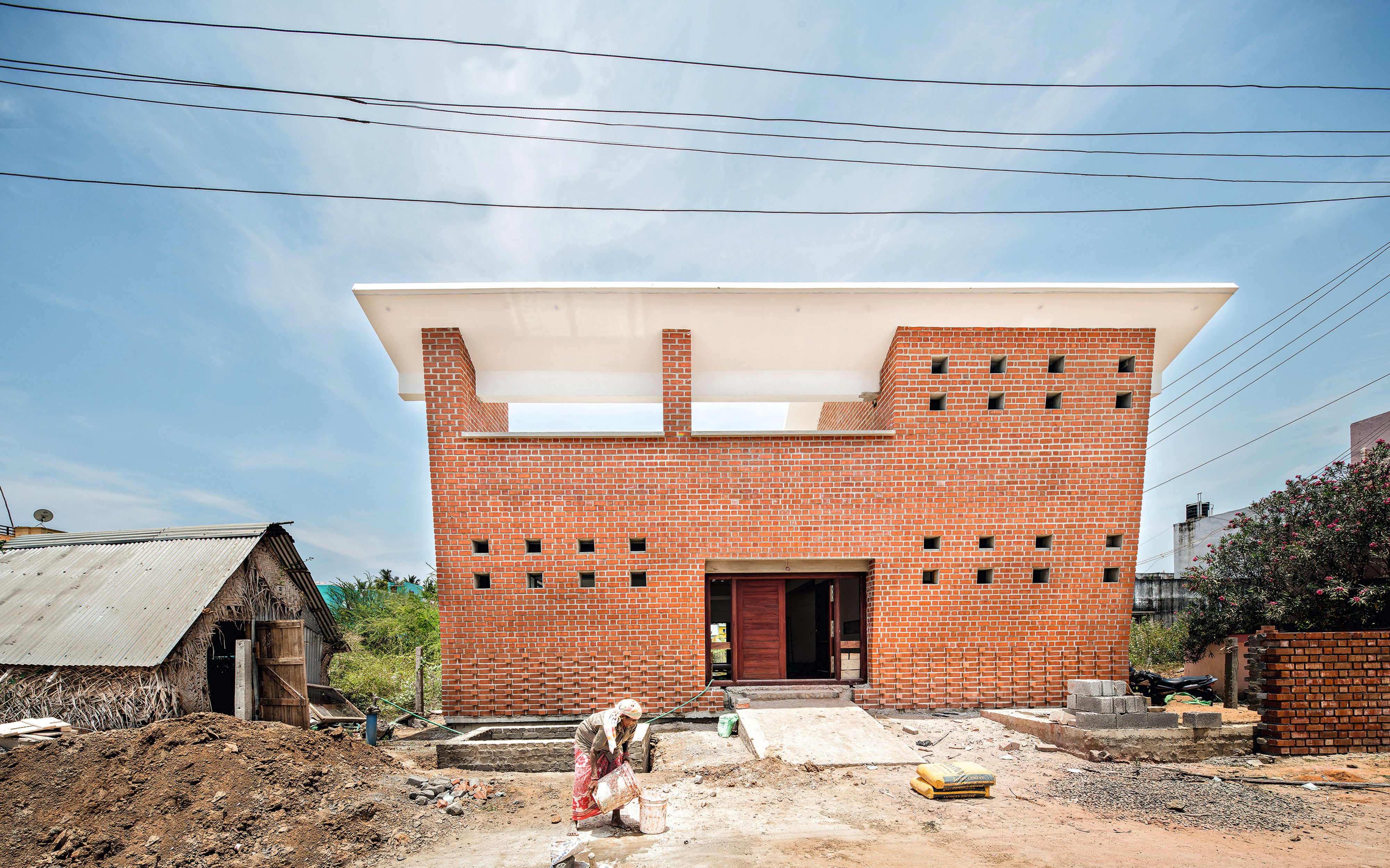
Kundoo’s Nandalal Sewa Samithi Library in Puducherry was realized in 2018 and built for a social organization of the same name. The building is in a residential area in rapidly urbanizing Puducherry on India’s eastern coast. Thanks to its façade of locally made exposed brick, the two-story structure stands out as an institutional building among the surrounding houses’ plastered and painted masonry construction. Photography © Javier Callejas
This is very relevant right now, both politically and environmentally.
My father was a freedom fighter, which meant he had to leave his home to avoid jail. We had been uprooted for a few generations already. A lot of the world is uprooted. Territoriality turns our sense of being uprooted into a negative thing. That’s why I take refuge in this river analogy. Everyone’s going to be uprooted. Maybe we can give up on ownership? Look at the history: when we began agrarian society and started to divide the land and own things, we also started fighting a lot. The fact is, can you go backward as a river? The place where it began was beautiful — the water was clean, and nothing was toxic. But if the water were to remain there, it would become stagnant.
Speaking of water, another thing I find stifling about this part of Europe is that it’s all lakes. Being on the coast feels more expansive; you can see the horizon, even the curvature of the earth. You grew up near salt water, no?
Yes. And all the places I like are on the ocean. Mumbai, Auroville, Puducherry, even New York — they’re on the water. Facing the sea allows you to think about the big picture. You realize you’re not the center of the universe, whereas in more closed, landlocked places people can easily slip into the illusion that they are. It’s crazy to contemplate the number of brutal things humans do to each other. We are all part of that. We can’t just point fingers. Get over this territorial aspect, get aligned with and listen to yourself — that’s what I try to do. There’s a universe within and a larger universe outside and in between. And that’s where the complications are: in the in-between. There are groupings — because you’re in academia, because you like a particular football team, because you feel some belonging toward your nation or tribe. There’s something violent in human nature, but also a good side. I like to focus on the latter. You need textures, you need to feel the earth and the stone, and you need to be fascinated by what’s outside of the standardized environment. Again, this is not just about sustainability — these fascinations make you stop and connect, interrupting you from doing business as usual.
I wanted to bring up the way we talk about sustainability. “Sustaining” suggests stagnation to me. If we’re talking about radical change, why are we using a conservative term?
Sustaining means remaining. That’s so boring. I also don’t like the narrative of “there are no resources” — that’s a narrative of colonization that implies everything is about extraction and exploitation.

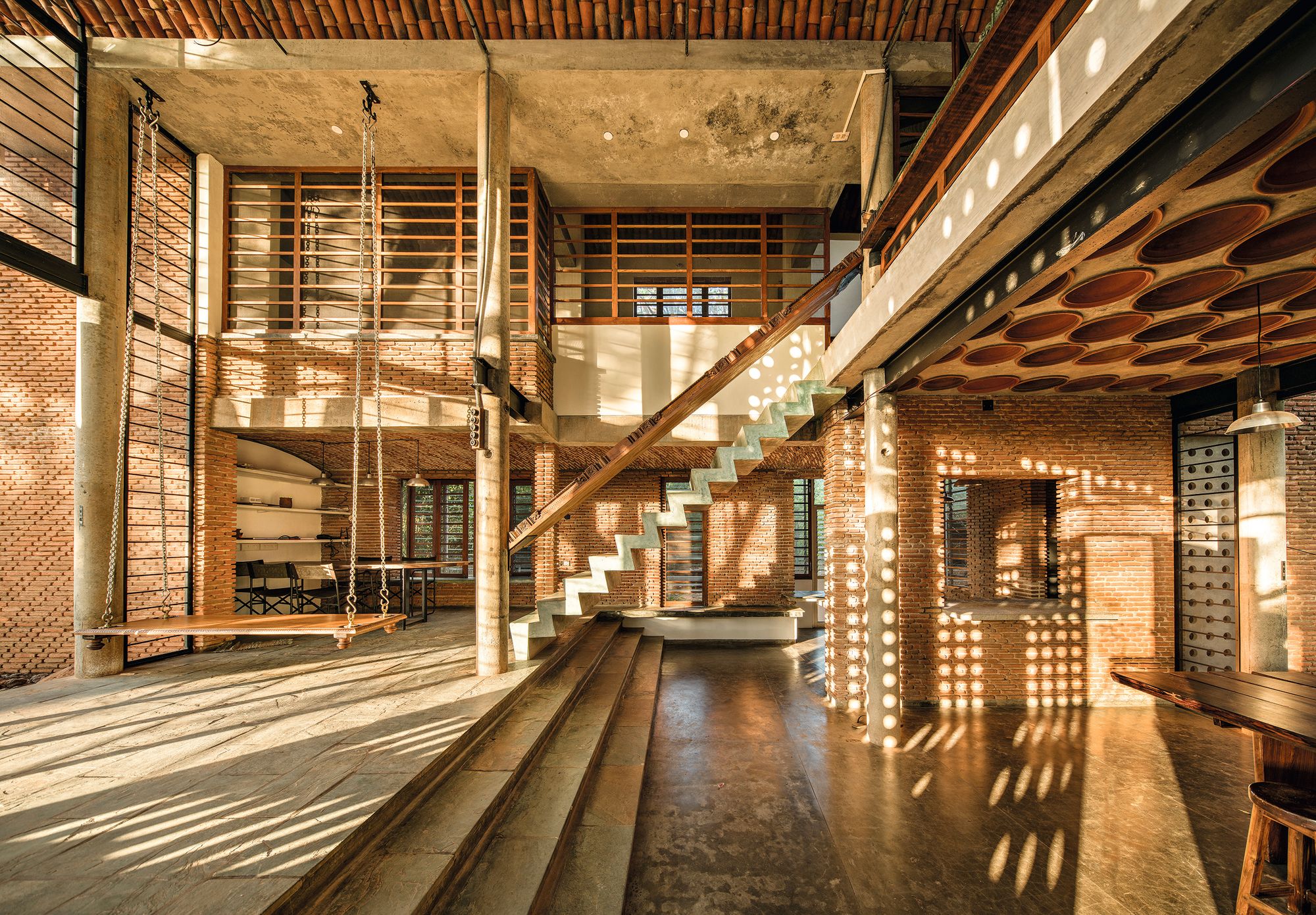
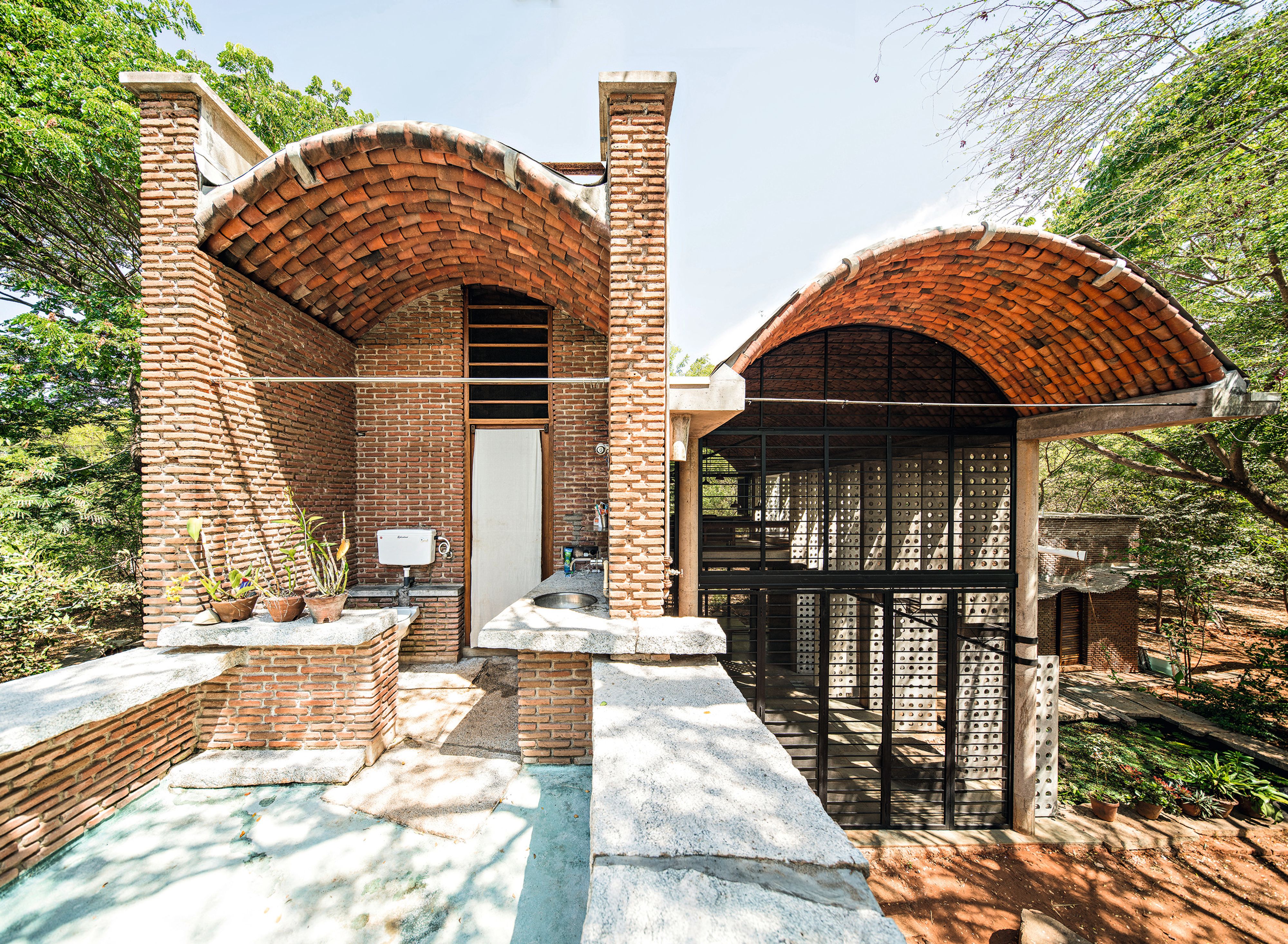
Between 1997 and 2000, while living and working in Auroville, India, Kundoo built her second home, the Wall House. The structure is a long vaulted space with private alcoves and a large living area open to the environment. Kundoo worked with local craftsmen who still produce pre-industrial achakal bricks, and with local potters on the terracotta roofing system, who otherwise face competition from the growing metal and plastic industries. To this day, Wall House is one of Kundoo’s most published projects. Photography © Javier Callejas
The colonial-sounding “re-” that suggests something has been removed from its place of origin. I’ve always found the term “human resources” horrible.
What about human resourcefulness? The scarcity narrative deprives the next generation instead of giving them a head start. We are only “depleting our natural resources” because of how we use and think about them. If you make industrial buildings the norm, you will have a resource crunch when you run out of cement or steel. But we could build with whatever’s lying around: an igloo with ice, or a mud brick shelter using mud mortar instead of cement, so that when you insulate it and heat it, it gets cooked and becomes waterproof. We have abundance. We just need to learn how to use it. That’s what humans have done for centuries.
So we should ditch the “re” and discuss “sources”? “Source” as in the source of the lake or the beginning of the stream.
The start of the river. Ultimately, we’re just moving energy around. The molecules are only being shifted — they don’t disappear. We don’t need to blame a lack of materials. Human relationship to materials and processes must be questioned. We need to rethink our narrative around materiality itself. We’ve been using human intervention to create substantial environmental, social, and economic problems instead of abundance. Not so clever. If architecture creates more problems than it solves, please look at the process. It’s not a question of whether wood is better than stone, or mud is better than clay — the Earth has all these things. Some materials are finite, but human resourcefulness isn’t. Your memory, your brain, your love, your care — these things are infinite. Develop them, and you progress.

Ferrocement. Photography © Andreas Deffner